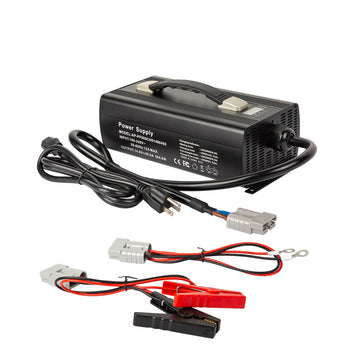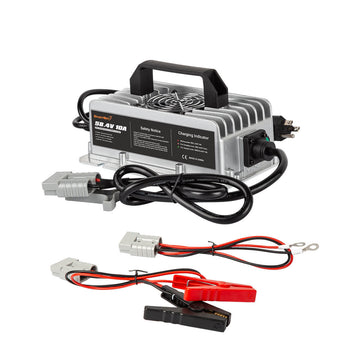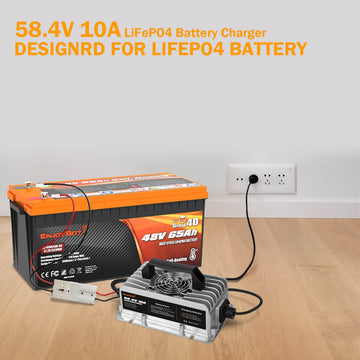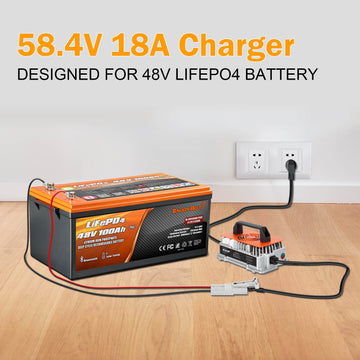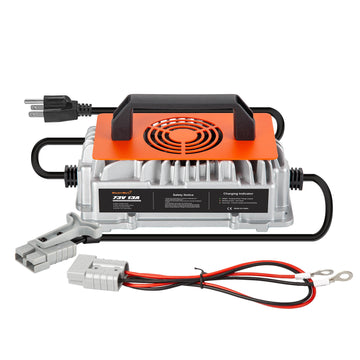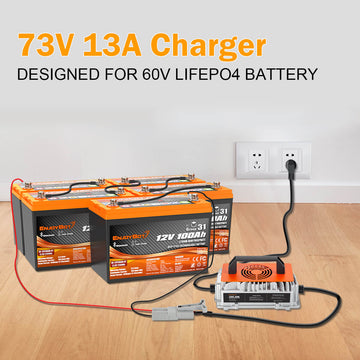Winter RV Life Essential: Enjoybot Self-Heating LiFePO4 Battery!
What is a self-heating lithium battery?
A self-heating lithium battery is a type of lithium-ion battery designed with built-in heating elements that allow it to warm itself when the ambient temperature drops below a certain threshold. This feature ensures that the battery can operate efficiently and safely in cold environments. Here's a more detailed breakdown:
Key Features of Self-Heating Lithium Batteries
Built-In Heating Elements: These batteries are equipped with internal heating pads or elements, typically made from materials like silicone, that can generate heat when activated.
Temperature Sensors: They include temperature sensors (such as PTC and NTC sensors) to monitor the battery's temperature and trigger the heating mechanism when needed.
Automatic Heating Activation: When the ambient temperature drops below a specific point (usually around 32℉), the heating elements activate to warm the battery cells to a safe charging temperature.
Battery Management System (BMS): A sophisticated BMS is integrated to manage the heating process, ensuring that the battery only heats when necessary and that it does not overheat.
Enhanced Cold Weather Performance: By maintaining an optimal temperature range, self-heating lithium batteries can be charged and discharged safely even in freezing conditions, which is crucial for applications in colder climates.
Benefits
Extended Lifespan: Protecting the battery from the damaging effects of cold temperatures can extend its lifespan.
Reliable Performance: Ensures consistent performance and energy output, even in cold weather.
Convenience: Eliminates the need for external heating solutions or bringing batteries indoors to warm up.
Safety: Prevents damage caused by charging lithium batteries at low temperatures, which can lead to lithium plating and reduced battery capacity.
The Problem with Traditional Batteries in Cold Weather
Lithium batteries, while superior in many ways, have a significant drawback: they must not be charged below freezing temperatures. Charging a lithium battery below freezing can cause irrevocable damage, essentially rendering it useless. This is particularly problematic for van lifers who often find themselves in colder climates, whether by choice or by chance.
RV lifers rely heavily on their battery systems to power everything from lights and refrigerators to electronic devices and heating systems. When temperatures drop below freezing, the risk of damaging these essential batteries becomes a pressing concern. Unlike lead-acid batteries, which can tolerate lower temperatures to some extent, lithium batteries are sensitive to charging below 32°F (0°C).
Imagine waking up in a remote winter wilderness, excited to start your day only to find that your lithium battery pack has been compromised by the cold overnight. Suddenly, your ability to charge devices, run appliances, and even maintain basic comfort is jeopardized. All the solar panels and generators in the world won’t help because you simply can’t charge your batteries in sub-zero conditions.
This issue isn’t just confined to extreme environments. Even in moderately cold climates, where temperatures frequently dip near freezing during winter nights, RV lifers face the constant challenge of keeping their batteries within the safe temperature range for charging. Heating your battery bank or insulating it can help mitigate some risks, but these solutions often come with their own set of challenges and limitations.
For many RV lifers, navigating these challenges is not just about convenience but about safety and survival. Whether you're chasing adventure in the mountains or seeking solitude in a snowy forest, the reliability of your battery system can make all the difference between a comfortable journey and a precarious situation.
As the demand for sustainable and off-grid living solutions continues to grow, so does the need for battery technologies that can withstand the rigors of diverse climates. Engineers and innovators are actively working to develop lithium batteries that are more resilient to cold temperatures, offering hope for a future where RV lifers can explore freely without the constant fear of battery failure due to weather conditions.
While lithium batteries represent a significant advancement in portable power technology, their vulnerability to cold weather remains a critical challenge for van lifers and other outdoor enthusiasts. Until more robust solutions emerge, careful planning and adaptation will remain essential for anyone relying on battery power in colder climates.
Does my RV need a heated lithium battery?
When it comes to managing power in your RV, especially in colder climates, understanding the nuances of your battery system is crucial. One critical consideration is whether to invest in self-heating lithium batteries. Here's a closer look at why self-heating batteries are an option and whether they are necessary for your RV setup.
Assessing Your RV's Setup
The necessity of self-heating RV batteries largely depends on the placement of your batteries and your typical usage scenarios:
Batteries in the Living Space
If your batteries are located within the living space of your RV, and you maintain a comfortable temperature, the self-heating function may never be needed. As long as you're present and keeping the area above freezing, your batteries should stay warm enough to charge safely.
Batteries in External Storage
For RV batteries stored outside the living space, such as in an underbelly storage compartment, the situation changes. These areas are not typically warmed by your RV's heating system. On freezing days, these batteries would require some form of heating to charge, whether that be self-heating batteries or an external heating method.
Unattended Charging
Another important scenario is when you're not present to manage the RV's heating. If you leave your RV and it's a cold but sunny winter day, self-heating batteries ensure that your solar panels can continue to charge the batteries. Without this feature, your BMS might put the batteries into low-temperature protection mode, wasting potential solar energy.
Is Self-Heating Worth the Extra Cost?
Ultimately, the decision to invest in self-heating batteries boils down to your specific needs and circumstances. Consider the following factors:
Location of Batteries: If your batteries are outside your living space and you frequently encounter freezing temperatures, self-heating batteries can be a valuable investment.
Usage Patterns: If you often leave your RV unattended in cold weather and rely on solar charging, self-heating batteries ensure consistent charging.
Budget: Self-heating batteries come at a higher cost. Weigh this against the convenience and protection they offer in your typical scenarios.
Self-heating batteries offer significant advantages for RV owners who frequently face cold weather and need reliable battery performance. If your batteries are stored in unheated spaces or if you need your system to function independently in cold conditions, the investment in self-heating technology can be worthwhile. Evaluate your specific needs, climate, and usage patterns to make the best decision for your RV setup.
Enjoybot self-heating batteries teardown and test:
1. 12V 100Ah self-heating group 24 battery
2. 12V 150Ah self-heating group 31 battery
3. 12V 200Ah self-hetaing group 4D battery
4. 48V 65Ah self-heating group 4D battery
Enjoybot RV/motorhome/van/camper battery self-heating principle
When the temperature is below 32°F (0℃) while charging, the battery automatically cuts off charging and turns on the heating pad for heating. During the heating process, the charger only powers the heating pad and does not charge the battery.
When the temperature reaches 41°F (5℃), the BMS stops heating. ≥41°F (5℃) Start charging the battery.
Enjoybot RV/motorhome/van/camper battery Heating Time:
When the temperature is below 32°F (0°C), please connect the charger or MPPT directly (make sure the input current is ≥8A) to heat the battery pack.
Enjoybot RV/motorhome/van/camper battery Temperature Time:
32°F (0°C) → 41°F (+5°C) 0.5 - 1 Hours
15°F (-10°C) → 41°F (+5°C) 1 - 2 Hours
-4°F (-20°C) → 41°F (+5°C) 2 - 3 Hours
In Conclusion
For anyone living the RV life, especially in cold climates, investing in a self-heating LiFePO4 battery is a no-brainer. It ensures that you have a reliable power source regardless of the weather, allowing you to focus on the joys of van living rather than the limitations of your power system. The Enjoybot battery has proven to be a worthy investment for you, offering peace of mind and superior performance.


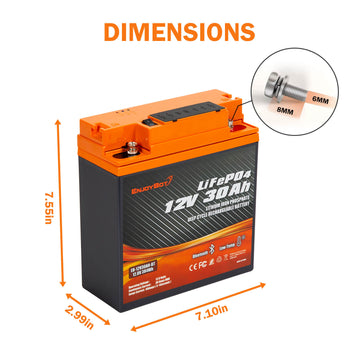
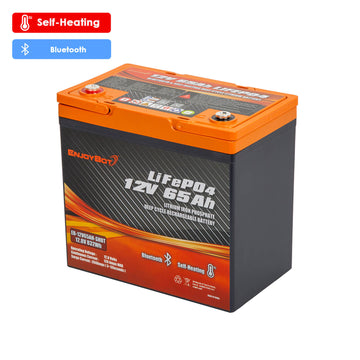
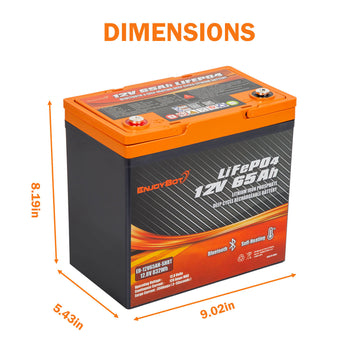
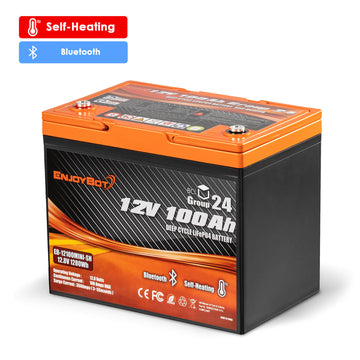
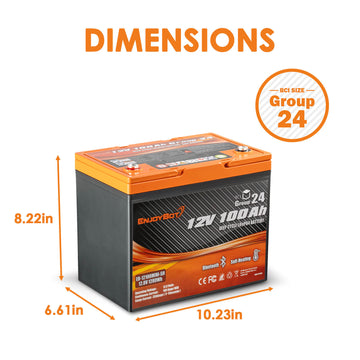



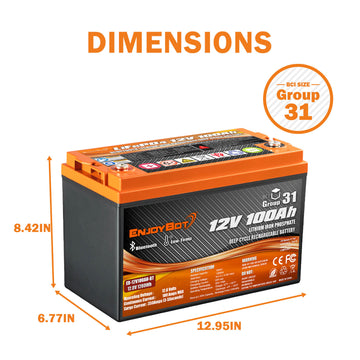

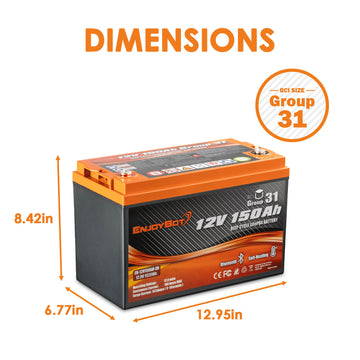

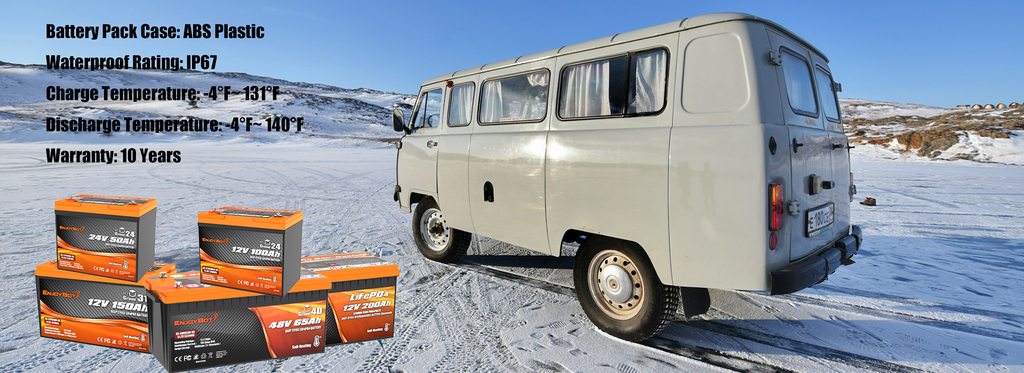
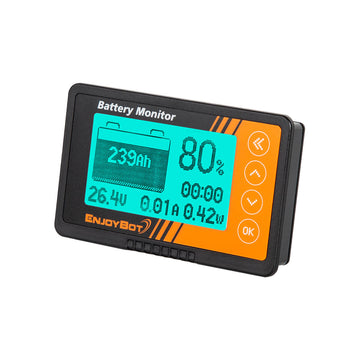
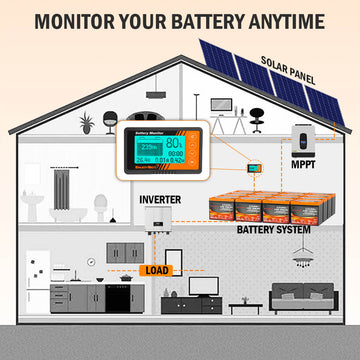
![[Upgraded Version] Enjoybot 14.6V 20A Waterproof Mountable LiFePO4 Lithium Battery Charger For 12V LiFePO4 Battery](http://enjoybotbattery.myshopify.com/cdn/shop/files/14.6V_20A_Waterproof_Battery_Charger_1_360x.jpg?v=1752565609)
![[Upgraded Version] Enjoybot 14.6V 20A Waterproof Mountable LiFePO4 Lithium Battery Charger For 12V LiFePO4 Battery](http://enjoybotbattery.myshopify.com/cdn/shop/files/14.6V_20A_Waterproof_Battery_Charger_2_360x.jpg?v=1752637374)
